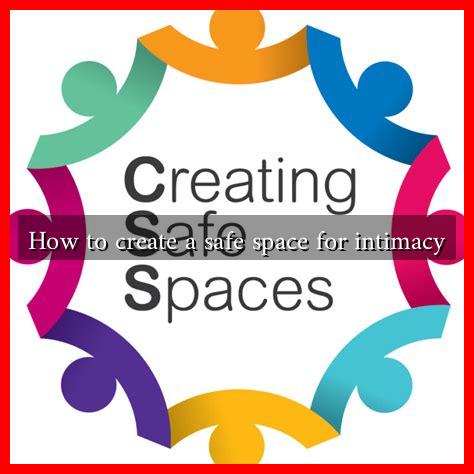-
Table of Contents
- How to Create a Safe Space for Intimacy
- Understanding the Importance of a Safe Space
- Key Elements of a Safe Space for Intimacy
- Practical Steps to Create a Safe Space
- 1. Establish Ground Rules
- 2. Create a Comfortable Environment
- 3. Practice Active Listening
- 4. Encourage Vulnerability
- Case Study: The Power of Safe Spaces
- Conclusion
How to Create a Safe Space for Intimacy
Intimacy is a fundamental aspect of human relationships, encompassing emotional, physical, and psychological connections. However, fostering intimacy requires a safe space where individuals feel secure, respected, and valued. This article explores how to create such an environment, offering practical tips and insights backed by research and real-life examples.
Understanding the Importance of a Safe Space
A safe space for intimacy is essential for nurturing trust and vulnerability. According to a study published in the Journal of Social and Personal Relationships, individuals who feel safe in their relationships are more likely to engage in open communication and express their feelings. This leads to deeper connections and greater satisfaction in relationships.
Key Elements of a Safe Space for Intimacy
Creating a safe space involves several key elements that contribute to emotional security. Here are some of the most important:
- Trust: Trust is the foundation of any intimate relationship. It allows individuals to share their thoughts and feelings without fear of judgment or betrayal.
- Respect: Mutual respect is crucial. Each partner should honor the other’s boundaries, opinions, and feelings.
- Open Communication: Encouraging honest dialogue fosters understanding and connection. Partners should feel free to express their needs and concerns.
- Non-Judgmental Attitude: A safe space is free from criticism. Partners should approach each other with empathy and understanding.
- Emotional Availability: Being present and emotionally available allows partners to connect on a deeper level.
Practical Steps to Create a Safe Space
Now that we understand the key elements, let’s explore practical steps to create a safe space for intimacy:
1. Establish Ground Rules
Setting ground rules can help create a framework for open communication. Discuss and agree on what is acceptable and what is not. For example:
- No interrupting when one partner is speaking.
- Agree to take breaks if discussions become too heated.
- Commit to honesty, even when it’s uncomfortable.
2. Create a Comfortable Environment
The physical space can significantly impact emotional safety. Consider the following:
- Choose a quiet, private location for discussions.
- Use soft lighting and comfortable seating to create a relaxed atmosphere.
- Incorporate elements that promote calmness, such as plants or soothing colors.
3. Practice Active Listening
Active listening involves fully concentrating on what the other person is saying. This can be achieved by:
- Maintaining eye contact.
- Nodding and using verbal affirmations like “I see” or “I understand.”
- Reflecting back what you’ve heard to ensure understanding.
4. Encourage Vulnerability
Vulnerability is key to intimacy. Encourage your partner to share their feelings by:
- Sharing your own feelings first to model openness.
- Validating their emotions and experiences.
- Creating a non-threatening environment where they feel safe to express themselves.
Case Study: The Power of Safe Spaces
A study conducted by the University of California found that couples who engaged in regular “check-in” conversations—where they discussed their feelings and experiences—reported higher levels of relationship satisfaction. These check-ins provided a structured opportunity for partners to express themselves in a safe environment, reinforcing trust and intimacy.
Conclusion
Creating a safe space for intimacy is essential for nurturing deep, meaningful relationships. By establishing trust, respect, and open communication, partners can foster an environment where vulnerability is welcomed and emotional connections can flourish. Remember, the journey to intimacy is ongoing, requiring continuous effort and commitment from both partners. By implementing the practical steps outlined in this article, you can cultivate a safe space that enhances your relationship and deepens your bond.
For further reading on building intimacy in relationships, consider exploring resources from the Gottman Institute, which offers research-based insights into relationship dynamics.


